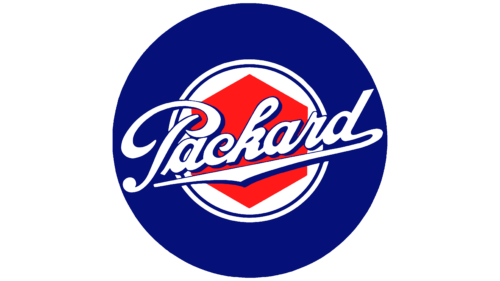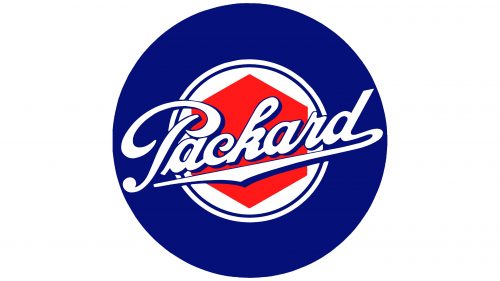The Packard logo conveys a sense of luxury and elegance, befitting one of the most influential brands in the automotive industry. The emblem captures the essence of the luxury car manufacturer, making it recognizable even though the company was closed many years ago.
Packard: Brand overview
The Packard family’s history started in 1899 when James Ward and William Doud Packard, brothers, established the Ohio Automobile Company in Warren, Ohio. James Packard made this choice after buying a Winton car, which turned out to be so unstable that he opted to build his own better car.
The Model A, the first vehicle, was introduced in 1899. Unlike most of its rivals at the time, it had unique steering that used a wheel rather than a lever. This vehicle soon established a solid reputation for dependability and quality.
After changing its name to Packard Motor Car Company in 1903, the business relocated to Detroit, Michigan, quickly emerging as the hub of the US car industry. By making this change, the business could increase output and have better access to labor and suppliers.
The company experienced rapid expansion in the 1910s. It debuted its first V12 in 1915 and its first six-cylinder engine in 1911. These powerful and smooth engines represented the brand and contributed to the company’s prominence as a premium automaker.
Packard made a vital contribution to the war effort in World War I by manufacturing Liberty L-12 airplane engines for the Allies. Later on, the development of car engines benefited from this knowledge in producing aviation engines.
The 1920s were the company’s prime. Along with Pierce-Arrow and Peerless, the business was acknowledged as one of the “Three Ps” of American automotive elegance. The brand was well known for its cutting-edge technologies and exquisite designs. In 1925, the firm debuted its catchphrase, “Ask the Man Who Owns One,” highlighting the superiority and status of Packard cars.
Like numerous other luxury car manufacturers, the company was badly damaged by the Great Depression of the 1930s. But in 1935, the business changed course and unveiled the less expensive One-Twenty model. Although this choice helped the brand weather the economic slump, it lessened the perceived exclusivity.
The company again turned to manufacturing military hardware during World War II, mainly engines for torpedo boats and military aircraft made in the United States and Great Britain. Under the Lend-Lease program, the business also built engines for Soviet tanks.
Following the war, the company encountered many difficulties. The “Big Three” (General Motors, Ford, and Chrysler) and other competitors had begun releasing new models, and the business found it difficult to resume passenger car production rapidly.
The company attempted to retake its place in the market for high-end vehicles in the 1950s. In 1955, the business unveiled the ground-breaking Torsion-Level suspension technology, which offers a remarkably smooth ride. However, the business was still beset by financial issues.
In 1954, the company and the Studebaker Corporation combined to form the Studebaker-Packard Corporation to fortify its position. However, the outcomes of this combination were not what was anticipated. Due to its financial difficulties, the United business could not compete with the “Big Three.” Studebaker was also having issues.
The final year of genuine manufacturing in Detroit was 1956. “Packardbakers” were manufactured in 1957 and 1958; these were Studebaker vehicles with slight Packard insignia and cosmetic modifications.
1958 saw the complete end of Packard automobile manufacturing. Studebaker-Packard persisted until 1967 when it gave up on the Packard moniker and changed its name to Studebaker-Worthington Corporation.
Even with the production ending, Packard’s influence endures. Collectors and enthusiasts of old cars place a high value on Packard automobiles. The company pioneered many technological advancements—such as automatic transmissions in 1949 and air conditioning in cars in 1939—that became industry norms.
There were other unsuccessful attempts to bring the Packard brand back in the ensuing decades. Nevertheless, the brand, representing elegance and excellence in its day, plays a significant role in American auto history.
Meaning and History
What is Packard?
It is an American luxury car company. It quickly established itself as a leading luxury automobile manufacturer, producing beautifully designed vehicles that combine performance, style, and advanced technology. The company’s slogan, “Ask the Man Who Owns It,” reflected its customers’ enthusiasm and devotion, including the rich, famous, and government leaders. While its reputation as one of America’s finest luxury car makers lives on, the brand’s demise resulted from increasing competition, financial problems, and poor management, all of which began after World War II, ultimately leading to its demise.
1899 – 1958
Although Packard was once known as a luxury car manufacturer, its logo appeared ordinary. It consisted of simple geometric shapes, creating a sense of balance and perfect symmetry, hinting at the company’s measured approach to everything it did.
The emblem was based on a large blue circle with smaller, primarily white circles inside. This shape evoked the image of a wheel, making it a perfect fit for an automotive brand. It conveyed a sense of dynamism, emphasizing the vehicles’ power, energy, and high speed.
The red hexagon in the center had a significant visual impact. Its contrasting color demonstrated the company’s readiness for bold experiments and a desire to go against traditions, as Packard cars in the early 20th century were considered some of the most innovative. The other colors in the logo were also symbolic:
- Blue evoked feelings of reliability, confidence, and safety.
- White was associated with calmness, purity, and perfection.
These colors were used for the base and the text that crossed the largest circle from edge to edge. Its diagonal placement became a recognizable hallmark of Packard, as the raised edge of the line was another expression of the company’s activity. It created a sense of movement toward new heights and achievements in a straight line and upwards.
The font of the wordmark was also distinctive. Designers gave the brand name a dynamic feel by using a handwritten style. The slanted letters with sharp angles, elegant curves, and bends reflected the sophisticated appearance of the cars. The elegant line drawn under the text and connected to the final “d” underscored the company’s special status in the global market.





